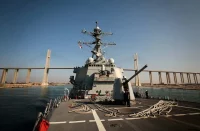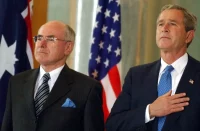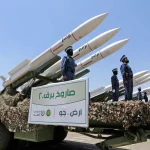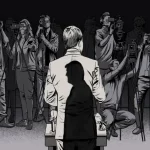The clouds gather over the Middle East. Not so long ago the clashes between the Sunni Muslims, who support the Free Syrian Army, and the Alawites, who stand by the government of Syrian president Bashar Assad, took place in Tripoli, the second largest city of Lebanon. Fighting also took place in the capital Beirut. Speaking at the press-conference on May 23 Russian Minister of Foreign Affairs Sergey Lavrov said the Syrian conflict may spread to the territory of neighboring Lebanon.
It’s a long time ago the northern part of Lebanon became the main transition route for delivering arms to Syrian militants, fighting the legitimate government of Syrian President. The border between Lebanon and Syria is used by Western special services as a passageway for getting special operations units and militants inside Syria. Formally Lebanon takes a neutral position on the Syrian crisis. But the opposition leader Saad al-Hariri openly supports the adversaries of President Bashar Assad, some sources say he is involved in arms supplies to the Syrian insurgents. According to French Le Figaro, there is a smoothly running system of providing funds to terrorists on the territory of Syria. Its center is situated in Lebanese Tripoli. The network faces no problem of funds shortage, it exists at the expense of the Persian Gulf monarchies, in particular the Eid Charity Foundation under the control of Saudi national Safar al-Hawali, Walid Tabtabi from Kuwait and Abdul Rahman al-Naimi from Qatar.
. The operation aimed at eliminating Syria is in full swing, it has already moved to the final stage. According to the CNN the US military instructors prepare the special operations forces of Jordan to capture government buildings and overthrow the Syrian government. The “Eager Lion-2012” military exercises started in Jordan in the middle of May bringing together up to 11 thousand special operations troops from 19 Arab and European countries. The exercise is led by the US Central Command. Besides Jordan hosts the US army units that have left Iraq and the militants who came back from Libya to get more training by Jordanian, Saudi and Pakistani instructors.
The exacerbation of the situation in Syria and Lebanon since 2011 is part of the New Greater Middle East concept elaborated long ago by the US “think tanks”. It envisages changing borders in the Middle and Near East. It was expounded in the monograph Strategic Geography and the Changing Middle East by Geoffrey Kemp and Robert Harkavy in the days of Bill Clinton in 1997. Right after the 9/11 2001 Washington started to ponder over the Middle East “redrawing”. US reporter Garrett Porter informed that three weeks after the terrorist acts of 9/11, 2001 then Defense Secretary Donald Ramsfeld came up with a new military strategy, that included as goals the overthrow of Saddam Hussein in Iraq, and then toppling regimes in Syria, Iran and four other Middle East countries. The concept was strongly supported by such a well known neocon as Paul Wolfowitz.
The Porter’s assessment was based on the report by Douglas Feight, a Rumsfeld’s subordinate that emphasized that the idea to redraw the Middle East map by military means was supported by the entire US military establishment. In his book War and Decision Feight included fragments of the report sent by Rumsfeld to then President George Bush on September 30, 2001 calling for focusing on bringing to power “new regimes” in some Arab countries.
The Feight’s words are supported by US retired General Wesley Clark. In his book Winning Modern Wars he said a friend of his who was in the Pentagon at the time said in November 2001 that the Defense Department list of countries where governments were to be overthrown included Iraq, Iran, Syria, Lebanon, Libya and Somalia. The very same countries mentioned by Clark were included into the Rumsfeld’s report published on September 30, 2001 (referred to by Feight).
Formally then President George Bush, Junior came out with the Greater Middle East concept on November 6, 2003 before the National Endowment for Democracy. The occupation of Iraq was to be the first stage of a long struggle for “the victory of democracy” in the Greater Middle East. The list of authors of the concept included Henry Kissinger, Dick Cheney, Condoleezza Rice, Richard Perle and Paul Wolfowitz.
Before G8 summit in June 2004 in Sea Island, Georgia, Washington published a working document Partnership for Progress and a Common Future with the Region of the Broader Middle East and North Africa. Back then Washington failed to receive support for the US way “democratization” of the Middle East. But the US political ruling top never refused the idea and in July 2006 the Secretary of State Condoleezza Rice announced a regional rebuilding plan.
The US leading think tanks had spent a number of years to come up with the plan. The goal of the Greater Middle East concept is creating chaos in the region that would make appear an axis of instability from Lebanon, Palestine to Syria, Iraq, the Persian Gulf states, Iran up to the border with Afghanistan. Besides the Anglo-Saxon military “road map” appears to encompass the whole post Soviet Central Asia, a region to link the unstable Middle East with even more unstable Afghanistan and Pakistan.
 A relatively little known map of the Middle East, Afghanistan and Pakistan started to go around in US government and military circles since the middle of 2006. It was prepared by Lieutenant Colonel Ralf Peters from the National Defense University. His last active service assignment was to the Office of the Deputy Chief of Staff for Intelligence. He is one of the most well known strategy experts with military background. The Map of the Middle East with his notes saw light in June 2006 in the Armed Forces Journal, that is right on the eve of the loud statements by Condoleezza Rice. The article was called Blood borders: How a better Middle East would look. Never Quit the Fight, the main book by the author that was published in July 2006, was based on the same Map. The US media reported that the four previous books by the author were popular among US government and military circles.
A relatively little known map of the Middle East, Afghanistan and Pakistan started to go around in US government and military circles since the middle of 2006. It was prepared by Lieutenant Colonel Ralf Peters from the National Defense University. His last active service assignment was to the Office of the Deputy Chief of Staff for Intelligence. He is one of the most well known strategy experts with military background. The Map of the Middle East with his notes saw light in June 2006 in the Armed Forces Journal, that is right on the eve of the loud statements by Condoleezza Rice. The article was called Blood borders: How a better Middle East would look. Never Quit the Fight, the main book by the author that was published in July 2006, was based on the same Map. The US media reported that the four previous books by the author were popular among US government and military circles.
As Ralph Peters saw it, a part of Syria was to be taken away to join “Free Kurdistan”and Sunni Iraq, the Syrian sea shore areas were to become part of Lebanon. Syria was to terminate its existence as a state.
There was an alternative map by prepared by a US Pentagon associated professor Michael F. Davie from Université François-Rabelais. In his work on the reconstruction of Middle East he mentioned the “axis of evil”, formally recognized by the USA, including Sudan, Iraq and Syria. The Michael Davie’s map doesn’t include the territory of Syria in its present day borders: instead there is a small state of Alawites at the sea shore, while Syria itself becomes part of a “new entity” formed together with the Iraqi Sunni. As Davie sees it, the Golan heights would become part of Israel as a result of liquidation of Syria as a sovereign state. Besides a new Palestinian state is going to become established on the territory of contemporary Jordan in exchange for Israel’s refusal to claim East Jerusalem. Lebanon is to be divided into two states: one belonging to the Shiites, another to the Maronites.
There is one more Middle and Near East division map published by the Vanity Fair magazine. It reflects the views of four experts: Dennis Ross, a diplomat with Middle East experience, David Fromkin, a historian, political scholars Kenneth Pollak and Daniel Byman. The idea is as follows. First: The division of Saudi Arabia and Iraq is a must. Second: Egypt is to be divided into two states – an urban area in the Nile delta and the western tribal area. Third, Kuwait and Qatar to be part of the United Arab Emirates to establish a new liberal state on the territory. At last, fourth, the Levant in the eastern part of the Mediterranean is to be a zone belonging to no nation.
The Arab Persian Gulf based TV channels hostile to Syria offer their own map of Syria after Assad. It also envisages the country’s division: a Kurds state in the North, a state of the Druze in the South and a Sunni state in the heart of it. The headquarters of radical groupings calling for a new revolution in Egypt have been searched recently. As a result the “corrected” versions of the Middle East maps have been produced. They have been made public by Al-Ahram and other Egyptian media outlets.
Syria has great role in the US plans. There are only three out of twenty Mediterranean states that are not NATO members and are not tied to the Alliance by “partnership programs”. They are Libya, Lebanon and Syria. Libya has already fallen down under the NATO’s strikes, now it’s the turn of Syria and Lebanon. It’s an occasion than then Secretary of Defense Robert Gates said the Middle East has three repressive regimes: Libya, Syria. Iran. The Where to Invade Next? publication edited by Stephen Elliott and inspired by actual Pentagon documents also lists Syria and Iran among US potential targets.
So, NATO and its Arab allies have already sentenced Syria to dismemberment. The “Arab Spring” gave an impetus to the US plans to redraw the Middle East borders and to the policy of Controlled Chaos worked out in the US Santa-Fe institute. The plans presuppose that the Syria’s downfall will weaken Iran and divert the world attention from the repressions taking place in Saudi Arabia and Bahrain (the both countries – key regional allies of the USA). It’s symptomatic that the talks are already in the air. It is said that Saudi Arabia is to engulf Bahrain, all Shiites are going to be evicted from the territory of the newly formed state. That’s the issue that topped the agenda of the last session of the Persian Gulf Cooperation Council. In the meantime the occupation of Bahrain by Saudi military goes on – their presence there lasts for the whole year and there is no sign they are going to leave.
Source: Strategic Culture Foundation














Comments